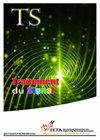reunet检测肝癌的实验研究
IF 1
4区 计算机科学
Q4 COMPUTER SCIENCE, ARTIFICIAL INTELLIGENCE
引用次数: 0
摘要
本文章由计算机程序翻译,如有差异,请以英文原文为准。
Experimental Investigations to Detection of Liver Cancer Using ResUNet
The detection and identification of cancerous tissue is currently a time-consuming and challenging process. The segmentation of liver lesions from cancer CT images can aid in treatment planning and clinical response monitoring. This study employs Residual U-Net, a powerful tool that has been adapted and applied for the segmentation of liver tumors, addressing the ongoing challenge in liver cancer diagnosis. Segmentation of liver lesions in CT images can be utilized to assess tumor burden, predict therapeutic outcomes, and monitor clinical response. In this research, the liver was extracted from the CT image using ResUNet, and the tumor was subsequently segmented using another ResUNet applied to the extracted Region of Interest (ROI). This approach effectively extracts features from Inception by combining residual and pre-trained weights. The deep learning system elucidates the underlying concept by highlighting the components contributing to the inner layer analysis and prediction, and by revealing a section of the decision-making process employed by pre-trained deep neural networks.
求助全文
通过发布文献求助,成功后即可免费获取论文全文。
去求助
来源期刊

Traitement Du Signal
工程技术-工程:电子与电气
自引率
21.10%
发文量
162
审稿时长
>12 weeks
期刊介绍:
The TS provides rapid dissemination of original research in the field of signal processing, imaging and visioning. Since its founding in 1984, the journal has published articles that present original research results of a fundamental, methodological or applied nature. The editorial board welcomes articles on the latest and most promising results of academic research, including both theoretical results and case studies.
The TS welcomes original research papers, technical notes and review articles on various disciplines, including but not limited to:
Signal processing
Imaging
Visioning
Control
Filtering
Compression
Data transmission
Noise reduction
Deconvolution
Prediction
Identification
Classification.
 求助内容:
求助内容: 应助结果提醒方式:
应助结果提醒方式:


